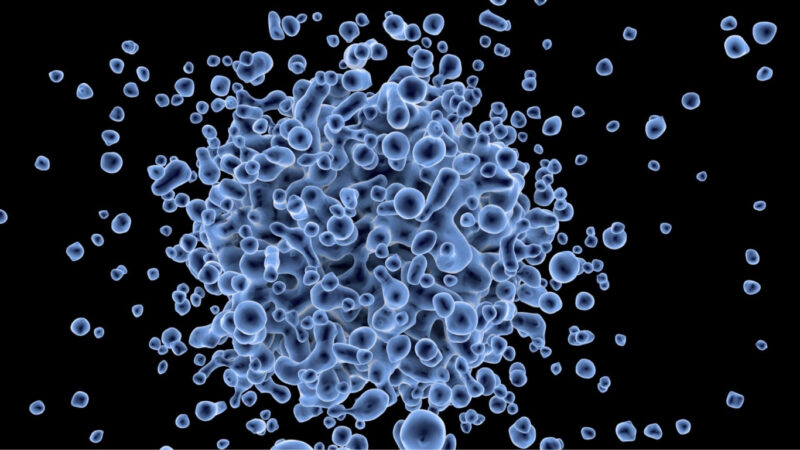Simply put, oncolytic viruses infect and destroy cancer cells while also helping the immune system become more robust in targeting malignant cells.
What Are Oncolytic Viruses?
Viruses are microscopic entities that infiltrate cells to replicate using the cell’s own genetic machinery. Under normal circumstances, the body has robust defense mechanisms to neutralize viruses. However, cancer cells often exhibit weakened antiviral defenses, allowing certain viruses to selectively infect them.
Oncolytic viruses either naturally possess the ability to target tumor cells or are genetically modified in the laboratory to do so. The primary goal is to destroy cancer cells while minimizing harm to healthy cells. Thanks to modern technologies, these viruses can be engineered to carry additional “weapons”—for example, molecules that bolster immune responses specifically within tumor cells.
Mechanism of Action
- Selective Infection: Because cancer cells have compromised antiviral defenses, they are more susceptible to viral infection.
- Destruction of Tumor Cells: The virus replicates inside the cancer cells, causing them to lyse (burst). This results in direct damage to the tumor tissue.
- Immune System Activation: When cancer cells break down, they release “cancer antigens” that can stimulate immune cells, prompting a broader immune response that may target remaining cancer cells elsewhere in the body.
T-VEC, an FDA-Approved Example
In 2015, the U.S. Food and Drug Administration (FDA) approved the first oncolytic virus therapy for melanoma: T-VEC (Imlygic®).
- Basic Structure: T-VEC is developed using the herpes simplex virus (HSV).
- Genetic Modification: While its ability to infect healthy cells is reduced, the virus is engineered to stimulate the production of GM-CSF, a protein that augments immune responses in tumor cells.
- Advantage: Administered through direct injection into tumor tissue, T-VEC can destroy cancer cells while simultaneously enhancing immune activity.

Side Effects
Like all treatment methods, oncolytic viruses can cause side effects. These may vary depending on the cancer type, the virus used, and the patient’s overall health. Common side effects include:
- Flu-like symptoms (chills, fever, fatigue)
- Pain and sensitivity at the injection site
- Nausea
Because oncolytic viruses generally activate the immune system, there is a rare but potential risk of damage to healthy tissues. Therefore, it is critical for patients and healthcare professionals to carefully evaluate possible risks and benefits before deciding on a treatment plan.
Clinical Research
Currently, many families of oncolytic viruses are under clinical investigation, including:
- Adenoviruses (commonly associated with cold-like symptoms)
- Herpes simplex virus (HSV)
- Maraba virus (found in insects)
- Measles virus
- Newcastle disease virus (primarily found in birds)
- Picornaviruses (the coxsackie virus belongs to this family)
- Reoviruses
- Vaccinia virus (historically used in the smallpox vaccine)
- Vesicular stomatitis virus (from the same family as the Maraba virus)
Researchers are exploring numerous strategies to enhance the oncolytic effect, such as identifying new viruses or genetically modifying existing ones to improve tumor specificity, minimize damage to healthy cells, and amplify the immune response against tumors.
A Look Ahead
Oncolytic virus therapy is regarded as a promising immunotherapy strategy in the fight against cancer. Though only a limited number of such treatments are currently approved, new platforms continue to emerge in clinical trials. By integrating personalized approaches and combining oncolytic viruses with other immunotherapeutic methods—such as cancer vaccines, checkpoint inhibitors, and CAR-T cell therapies—clinical outcomes can potentially be significantly enhanced.
Ultimately, oncolytic viruses not only eradicate tumor cells but also stimulate the body’s natural defense mechanisms, offering a more comprehensive treatment paradigm. This dual action can help reduce the risk of cancer recurrence and may eliminate metastatic lesions. Experts predict that findings from ongoing clinical research will further strengthen the role of oncolytic viruses in cancer therapy in the coming years.
Moreover, in my next article, I will discuss organ transplant strategies and how the knowledge gained in immunological management from these procedures can be applied—together with oncolytic viruses—to target cancer more effectively.
Note: Each patient’s situation is unique. It is therefore critical for a medical specialist to assess eligibility for oncolytic virus therapy and associated risks. Patients interested in participating in clinical trials are advised to consult their physicians or the relevant research centers for comprehensive information.
References
Fukuhara, Hiroshi et al. “Oncolytic virus therapy: A new era of cancer treatment at dawn.” Cancer science vol. 107,10 (2016): 1373-1379. doi:10.1111/cas.13027
Raja, Junaid et al. “Oncolytic virus immunotherapy: future prospects for oncology.” Journal for immunotherapy of cancer vol. 6,1 140. 4 Dec. 2018, doi:10.1186/s40425-018-0458-z
Goradel, Nasser Hashemi et al. “Oncolytic virotherapy: Challenges and solutions.” Current problems in cancer vol. 45,1 (2021): 100639. doi:10.1016/j.currproblcancer.2020.100639





